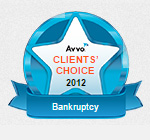
Bankruptcy brings eye opening awareness of personal finances and one nagging issue for many is what happens to a car in bankruptcy.
If it is a reliable car with affordable payments can you keep it?
If it’s an old clunker can you get rid of it?
What about a car you like but the loan is upside down? It gets you where you need to go, but the loan is higher than the car’s value. What happens to that car in bankruptcy?
Chapter 7 bankruptcy presents options
Let’s take a look at what they are.
Options for Car in Bankruptcy
Before changes to federal bankruptcy law in 2005 many Chapter 7 filers simply did a “ride through”. They kept paying the car loan, ignored the fact that a chapter 7 discharge cancels out the car loan, and went on as if nothing happened. As long as they kept paying most auto loan companies were good with it as long as they received payments. If and when payments stopped, the car faced repossession.
But current bankruptcy law requires filers to make one of three choices. Those filing bankruptcy must choose to redeem, reaffirm or surrender. Let’s spell out all three options in more detail.
Reaffirmation
A successful Chapter 7 bankruptcy discharges most debt including your car loan. Certain types of debt are not discharged, including most student loans. But car loans and mortgages are discharged. People owning a reliable car with affordable payments can sign a reaffirmation agreement to keep the car.
The agreement does what it sounds like. Where the debt on the car would be cancelled by the bankruptcy discharge, this agreement reaffirms the original terms of the loan as if there had been no bankruptcy.
Several issues arise with a reaffirmation. In some jurisdictions including Massachusetts bankruptcy courts often refuse to allow reaffirmation where the filer has inadequate disposable income. Some lenders still look the other way where there’s no reaffirmation and payments are still being made. But some lenders repossess if their borrower fails to reaffirm or select one of the other options even if the borrower continues payments.
Reaffirmation works only if the ‘equity value’ of the car fits within the bankruptcy exemptions available in your jurisdiction, an issue we’ve covered in another blog article.
Redemption
One of the other options allows car owners to redeem the vehicle. This works where the car loan represents debt much higher than the value of the car. Sometimes people need a new car before the old car loan is paid. So the old car loan rolls into the new car loan. While this happens due to necessity it means the car owner now faces debt much higher than the value of the car.
Let’s say the car is worth $4,000. The outstanding amount on the car loan is $7,000. In this example the car owner owes $3,000 more than the car is worth.
If all the stars line up correctly redemption cancels that excess $3,000 and crunches the loan down to the actual $4,000 value of the car. Most auto loan companies refuse to do this. This option requires finding a redemption loan company willing to pay off the value of the car and essentially refinance the loan at that amount.
Redemption under the above scenario needs approval by the bankruptcy court. Your lawyer files a motion allowing the court to order the first car loan company to accept the $4,000 payment and walk away. The court also must allow the second company to take over the loan at the value of the car.
It is true that redemption lenders charge a high interest rate. This option does not always work. At the same time I’ve seen clients reduce an excessively high loan, receive a lower monthly car loan payment and get a shortened term on the car loan.
Redemption presents one option to at least consider in the right circumstances.
Surrender
Surrendering a car in bankruptcy means letting the bankruptcy discharge cancel out the car loan. That means the car loan terminates by virtue of the bankruptcy discharge. At the same time, faced with cancellation of the loan, the auto loan company has a right to take the vehicle.
After the car loan ends in discharge, the car loan company will take the vehicle. Similar to repossession, the auto lender will reclaim the vehicle. But in a repo, after the lender sells the vehicle, they come after the car owner for the deficiency, that is, the difference between what they get for the vehicle at auction and the outstanding amount of the loan plus the lender’s costs and fees. In a surrender, the bankruptcy discharge cancels out all of that. As the vehicle goes away, the owner’s complete financial obligation also goes away.
Surrender presents the best option in only a few circumstances. A broken down clunker, not running or beyond repair carrying a car loan presents a candidate for surrender. Another scenario comes where a debtor may have purchased a vehicle with a loan far above their capacity to pay, or where their income has decreased since the vehicle was purchased. Surrender gives the option of shedding the car loan, and the car.
Options for the Car in Bankruptcy
The above three options apply to Chapter 7 bankruptcy. Chapter 13, often called a wage earner’s payment plan has different options. For example the redemption does not apply. At the same time in a Chapter 13 filing the bankruptcy filer can often “cram down” an excessive car loan to the actual value of the vehicle.
In a Chapter 7 bankruptcy the person filing must select one of the three options, redeem, reaffirm or surrender. Selecting the best option means that before filing the person considering a bankruptcy needs to take a look at their individual situation including their income, the terms of the car loan and the value & condition of the car.
The three options outlined above apply to all unsecured loans including a mortgage. This blog focuses on vehicle loans. That’s because the car presents a major concern for most people who come to my office to consider bankruptcy. Bankruptcy raises many issues and procedural hurdles. So, your best bet if considering a filing is to consult with an experienced bankruptcy attorney in your jurisdiction.
Model: Zoe Collazo
Sources:
Redemption Law. 11 U.S. Code § 722.
What is the Bankruptcy Discharge? 11 U.S. Code § 727.
The author of this article, Attorney Andrew D. Myers practices law in Massachusetts and New Hampshire, representing bankruptcy clients in both states.
Visits: 223




